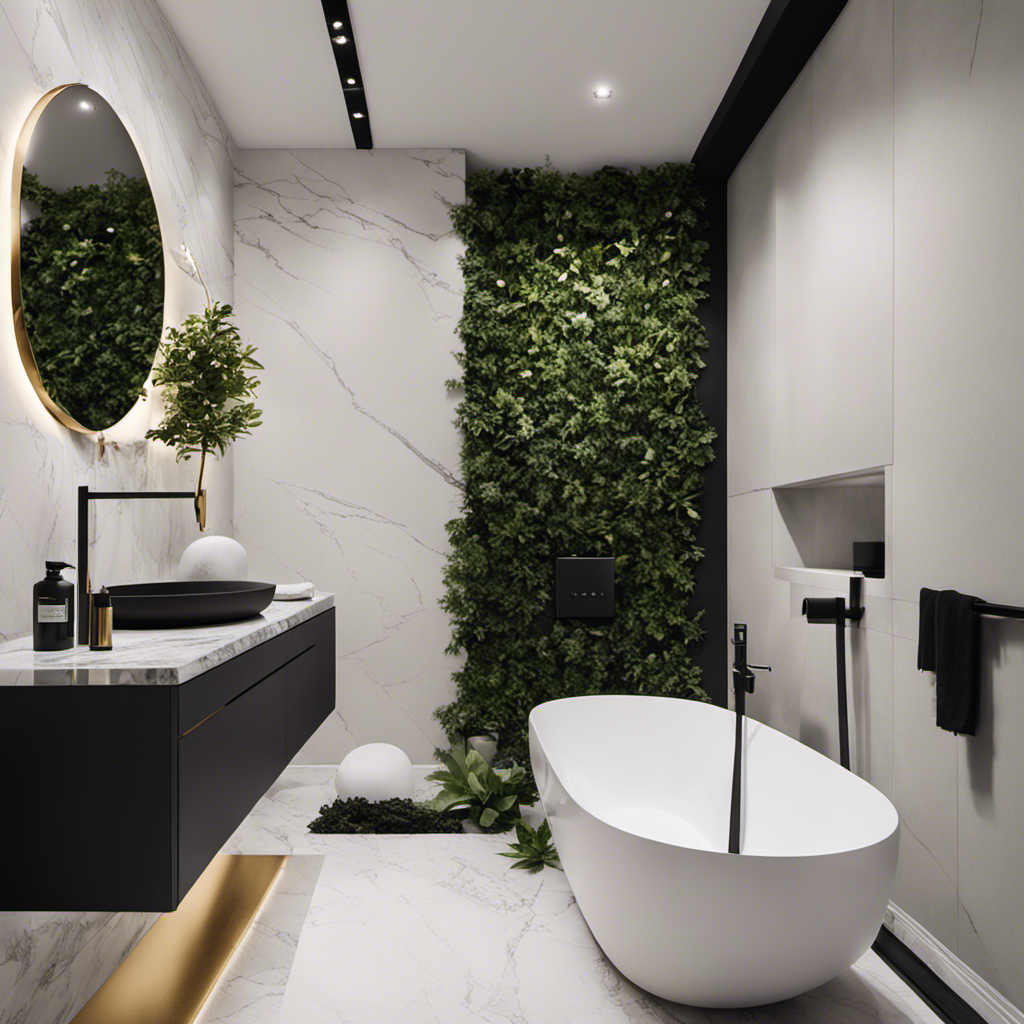As I take a moment to sit on my comfortable porcelain throne, I can’t help but wonder who had the ingenious idea to invent this essential fixture of modern life.
In this article, we will dive into the fascinating history of the toilet, exploring ancient sanitation systems, early innovations in waste disposal, and the notable inventors who contributed to its evolution.
Prepare to be amazed by the advancements in toilet technology and the profound impact it has had on public health.
Key Takeaways
- Ancient civilizations developed various sanitation systems, such as complex underground drains and public latrines connected to a sewer system.
- Toilet designs evolved from simple pit latrines to modern flush toilets, revolutionizing waste management and cleanliness.
- Hygiene advancements, such as soap and germ theory, significantly improved public health.
- Notable inventors, such as Alexander Cumming, Thomas Crapper, John Harington, and Joseph Bramah, made significant contributions to toilet design and sanitation practices.
Ancient Sanitation Systems
Ancient civilizations developed various sanitation systems to manage waste. Early plumbing systems and ancient toilet designs were integral to their efforts in maintaining cleanliness and preventing the spread of diseases.
One example of an early plumbing system can be found in the city of Mohenjo-daro, an ancient Indus Valley civilization. The city had a complex network of underground drains that carried waste away from homes and public areas. These drains were made of baked clay pipes, showing the advanced engineering skills of the time.
Ancient toilet designs were also innovative. In ancient Rome, for instance, public toilets called ‘latrines’ were constructed with multiple seats made of stone or wood. These toilets were often connected to a sewer system that carried waste away from the city.
The development of these early sanitation systems demonstrates the importance ancient civilizations placed on maintaining hygiene and sanitation.
Early Innovations in Waste Disposal
When it comes to understanding the evolution of waste disposal and hygiene practices, it is fascinating to explore the ancient sewage systems, the advancements in hygiene throughout history, and the evolution of toilet designs.
Ancient civilizations, such as the Indus Valley civilization and the Roman Empire, developed sophisticated sewage systems that were way ahead of their time. These systems laid the foundation for modern sanitation practices.
Over time, hygiene advancements, such as the development of soap and the understanding of germ theory, have significantly improved public health.
Additionally, the evolution of toilet designs, from simple pit latrines to modern flush toilets, has revolutionized the way we manage waste and maintain cleanliness.
Ancient Sewage Systems
You’ll be amazed at the sophisticated sewage systems developed by ancient civilizations. Sewage management was a critical aspect of maintaining public health, and these early civilizations recognized its importance.
For example, the Indus Valley Civilization, dating back to around 2500 BCE, had an extensive network of underground drains and water channels to manage their waste.
The Romans, known for their engineering prowess, built impressive sewer systems that included underground tunnels, drains, and public toilets. These sewage systems not only improved sanitation but also had significant public health implications. By removing waste efficiently, they helped reduce the spread of diseases like cholera and typhoid.
The ancient Egyptians also had a well-developed sewage system, with evidence of brick-lined drains and cesspits. These advanced systems demonstrate the early civilizations’ understanding of the importance of proper sewage management for maintaining public health.
Hygiene Advancements Throughout History
Hygiene advancements have greatly improved public health throughout history. Sanitation practices and historical bathroom habits have evolved over time, leading to significant improvements in public health and hygiene. Four key advancements stand out:
-
Development of sewage systems: Ancient civilizations, such as the Indus Valley and ancient Rome, created elaborate sewage systems to remove waste from their cities. These systems helped prevent the spread of diseases caused by unsanitary conditions.
-
Invention of modern toilets: The invention of the flush toilet by Sir John Harington in 1596 revolutionized bathroom habits. It provided a more hygienic and efficient way to dispose of waste, reducing the risk of contamination.
-
Introduction of soap: The widespread use of soap in the 19th century significantly improved hygiene practices. Soap helps remove bacteria and viruses from the skin, reducing the transmission of diseases.
-
Implementation of public health campaigns: In the 20th century, public health campaigns promoting proper hygiene practices, such as handwashing, have played a crucial role in preventing the spread of infectious diseases.
These advancements in sanitation practices and historical bathroom habits have had a profound impact on public health, reducing the prevalence of diseases and improving overall hygiene.
Evolution of Toilet Designs
To fully understand the evolution of toilet designs, it’s fascinating to explore the various innovative ways people have approached waste disposal throughout history. The concept of a toilet bowl, a receptacle for waste, has been around for thousands of years.
Ancient civilizations, such as the Indus Valley and Roman Empire, had advanced sewage systems with sophisticated toilet bowls. However, it was not until the 16th century that the flushing mechanism, a crucial component of modern toilets, was introduced.
Sir John Harington, an English courtier, invented the first flush toilet in 1596. His design included a water-closet with a flushing mechanism that used a valve to release water and waste. This invention paved the way for the development of modern toilets and revolutionized sanitation practices worldwide.
Notable Inventors in Toilet History
There’s an interesting story behind the notable inventors in toilet history. These individuals played a crucial role in revolutionizing sanitation and improving public health. Here are some remarkable inventors who contributed to the development of toilets:
-
Alexander Cumming: In 1775, Cumming designed the S-shaped trap, which prevented foul odors from entering the room.
-
Thomas Crapper: Although often mistakenly credited as the inventor of the flush toilet, Crapper was responsible for popularizing and improving the design in the late 19th century.
-
John Harington: In 1596, Harington invented the first flushing water closet, which was installed at his residence and used by Queen Elizabeth I.
-
Joseph Bramah: Bramah patented the first practical flush toilet in 1778, incorporating a hinged valve and an improved flushing mechanism.
These inventors’ contributions laid the foundation for the modern toilets we use today, transforming sanitation practices worldwide.
Evolution of the Modern Toilet
After learning about the notable inventors in toilet history, I became curious about the evolution of the modern toilet. It is fascinating to see how this essential fixture has evolved over time to meet our needs for hygiene and comfort.
One significant aspect of the modern toilet is its plumbing system. The development of efficient toilet plumbing has greatly improved the functionality of toilets, allowing for the safe disposal of waste and the prevention of odors.
Additionally, advancements in toilet hygiene have been crucial in maintaining cleanliness and preventing the spread of diseases. Innovations such as the introduction of toilet paper, bidets, and automatic flushing systems have all contributed to better toilet hygiene practices.
The evolution of the modern toilet is a testament to our continuous efforts to improve sanitation and make our lives more comfortable.
Advancements in Toilet Technology
Modern toilet design and sustainable toilet solutions have become increasingly important topics in recent years. As we continue to strive for more environmentally friendly practices, it is crucial to examine the impact of our everyday activities, including our use of toilets.
Advances in toilet technology have allowed for the development of innovative designs that not only improve functionality and comfort but also prioritize sustainability by reducing water usage and waste.
Modern Toilet Design
If you’re looking for a more efficient and comfortable toilet experience, you’ll be amazed by the advancements in modern toilet design. With a focus on toilet efficiency and accessibility, manufacturers have introduced several innovative features that enhance both functionality and user comfort.
Here are some notable advancements:
-
Dual-flush toilets: These toilets offer two options for flushing, allowing users to choose between a full flush for solid waste and a reduced flush for liquid waste. This helps conserve water and reduce water bills.
-
Bidet seats: Bidet seats are becoming increasingly popular as they provide a more hygienic and gentle cleansing experience. They offer features like adjustable water pressure, temperature control, and even air drying.
-
Raised toilet seats: These seats are designed to make it easier for people with mobility issues or disabilities to use the toilet. They increase the height of the toilet seat, reducing the strain on knees and making it more accessible.
-
Self-cleaning toilets: Self-cleaning toilets have automated cleaning features that help maintain cleanliness and hygiene. They can include features like UV light sanitization, automatic flushing, and even built-in air fresheners.
These advancements in modern toilet design not only prioritize efficiency and accessibility but also enhance the overall user experience.
Sustainable Toilet Solutions
One of the notable advancements in sustainable toilet solutions is the use of dual-flush toilets. These toilets have two different flushing options – one for liquid waste and another for solid waste. By providing the option to use less water for liquid waste, dual-flush toilets can significantly reduce water consumption in households and public facilities. According to a study conducted by the Water Research Foundation, dual-flush toilets can save an average of 26% water per flush compared to traditional toilets. This not only helps conserve water resources but also reduces the strain on wastewater treatment plants. In addition to dual-flush toilets, other sustainable toilet solutions include toilet recycling programs, where old toilets are recycled into new products, and waterless toilets, which eliminate the need for flushing altogether. These innovative solutions are crucial in promoting environmental sustainability and water conservation.
| Advantages of Dual-Flush Toilets | Disadvantages of Dual-Flush Toilets |
|---|---|
| Water conservation | Higher initial cost |
| Reduced strain on wastewater treatment plants | Potential for more frequent repairs |
| Cost savings in the long run | Requires education and awareness |
| Environmentally friendly | Limited design options |
| Increasingly available in the market |
Impact of Toilets on Public Health
Toilets have had a significant impact on our overall public health and sanitation. They have revolutionized our sanitation practices and played a crucial role in disease prevention. Here are four reasons why toilets are essential for public health:
-
Improved sanitation: Toilets provide a hygienic and safe way to dispose of human waste, preventing it from contaminating water sources and spreading diseases like cholera, dysentery, and typhoid.
-
Sanitation infrastructure: Access to toilets ensures that waste is properly managed, minimizing the risk of harmful pathogens entering the environment and causing widespread illnesses.
-
Personal hygiene: Toilets enable individuals to maintain good hygiene practices by providing a space for handwashing, reducing the transmission of infectious diseases.
-
Community health: Adequate sanitation facilities contribute to the overall well-being and quality of life of a community, promoting better health outcomes and reducing the burden of preventable diseases.
Frequently Asked Questions
How Does the Invention of the Toilet Impact the Environment?
The invention of the toilet has had a significant impact on the environment. It has improved sanitation and hygiene, reducing the spread of diseases. However, the waste management and water usage associated with toilets pose sustainability challenges.
What Were the Sanitation Practices Like Before the Invention of the Toilet?
Before the invention of the toilet, sanitation practices were rudimentary and often unsanitary. Historical practices varied, but most involved the use of communal latrines or simply relieving oneself in open areas.
Are There Any Cultural or Regional Variations in Toilet Designs?
There are indeed cultural adaptations and regional variations in toilet designs. Different cultures and regions have developed their own unique approaches to sanitation, taking into account factors such as available resources and local customs.
How Has the Design of Toilets Evolved Over Time?
Toilet design has evolved over time, reflecting changes in historical sanitation practices. From simple pit latrines to modern flush toilets, advancements in plumbing, sanitation systems, and hygiene have greatly improved the functionality and comfort of toilets.
What Are Some Innovative Technologies Being Developed for Toilets in the Future?
In the future, we’ll have smart toilets that do everything for us – from analyzing our health to playing our favorite tunes. Plus, water-saving toilets will help conserve our precious resources. It’s all about convenience and sustainability!
Conclusion
In conclusion, the toilet is a remarkable invention that has evolved significantly over time.
From ancient sanitation systems to early innovations in waste disposal, the journey of the toilet has been one of constant improvement and advancement.
Notable inventors have played a crucial role in shaping the modern toilet as we know it today.
The advancements in toilet technology have not only improved our comfort and convenience but have also had a significant impact on public health.
The toilet, a seemingly mundane object, has revolutionized our lives in ways we often take for granted.










